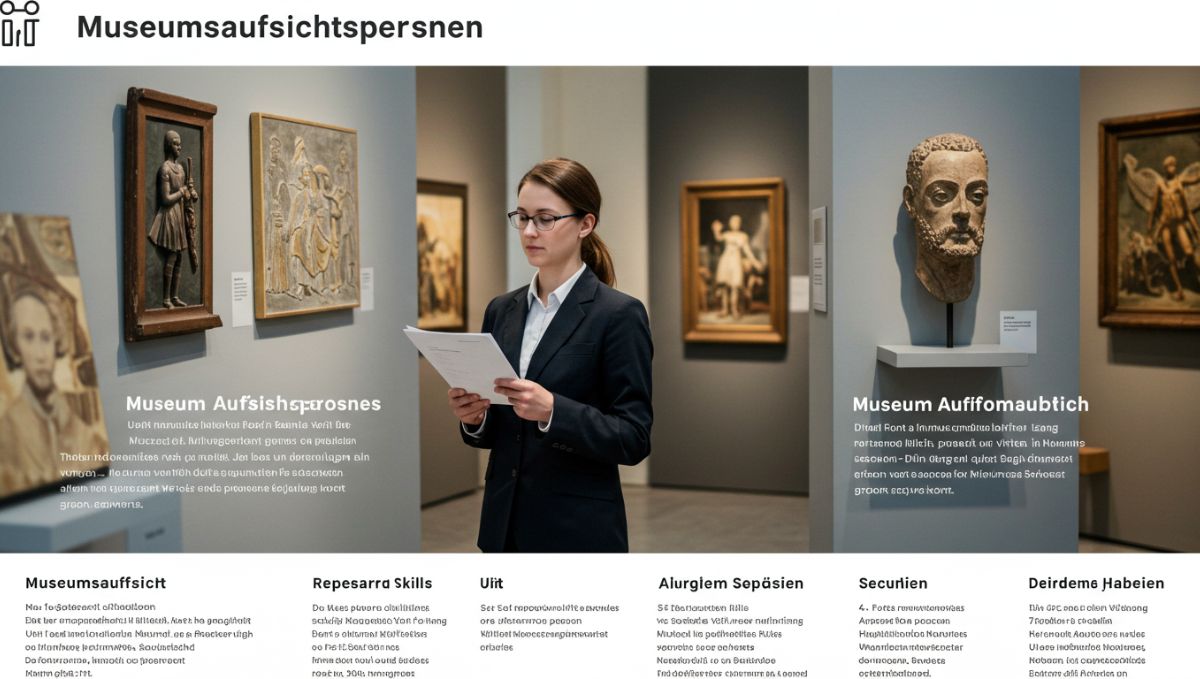Working in a museum is not only about curating exhibitions or preserving artifacts. Behind the scenes and in front of visitors, there are many essential roles that ensure the smooth operation of cultural institutions. One of these vital roles is the Museumsaufsicht job, or museum attendant. This position is often underestimated, yet it plays a central part in providing visitors with a safe, welcoming, and educational experience.
In this article, we’ll explore what a Museumsaufsicht does, the required skills, the work environment, and the career prospects for those interested in this profession.
What is a Museumsaufsicht?
The term Museumsaufsicht comes from German and translates roughly to museum attendant or museum guard in English. The role is primarily focused on supervising museum spaces, ensuring the protection of exhibits, and assisting visitors during their visit.
Museumsaufsichten serve as the “face of the museum,” as they are often the first point of contact for guests. They combine responsibilities of security, customer service, and cultural mediation, depending on the institution and the size of the team.
Key Responsibilities
The responsibilities of a Museumsaufsicht can vary depending on the type of museum (art, history, science, or cultural heritage). However, the core tasks usually include:
1. Supervising Exhibition Rooms
The main responsibility is to monitor galleries and exhibition spaces. Museumsaufsichten ensure that visitors follow the rules—such as not touching artwork, avoiding photography where prohibited, or maintaining respectful behavior.
2. Protecting Exhibits
A Museumsaufsicht safeguards valuable artifacts, artworks, and installations from potential damage, theft, or neglect. They act as a protective presence, deterring inappropriate behavior and responding quickly if issues arise.
3. Assisting Visitors
Beyond security, they answer basic visitor questions, provide directions within the museum, and ensure a welcoming atmosphere. In some institutions, they may also distribute information materials or guide visitors to specific exhibits.
4. Monitoring Safety Procedures
Museumsaufsichten job are trained to respond to emergencies, including evacuations, first aid situations, or technical issues in the museum. Their role ensures the safety of both people and collections.
5. Supporting Special Events
During exhibitions, openings, or cultural events, Museumsaufsichten often work extended hours to help manage larger crowds and maintain order.
Skills and Qualifications
While formal academic qualifications are not always required, being an effective Museumsaufsicht job demands a unique set of skills:
-
Observation Skills – Attention to detail is critical for spotting unusual behavior or potential risks.
-
Communication Skills – They must interact with visitors politely and professionally, often in multiple languages.
-
Patience and Tact – Museums can be busy, and attendants need the ability to handle difficult situations calmly.
-
Cultural Appreciation – A genuine interest in art, history, or science enriches their ability to engage with visitors.
-
Physical Endurance – The job often requires long hours of standing and walking throughout the museum.
-
Teamwork – Museumsaufsichten work closely with security staff, curators, and front-desk employees.
In some cases, additional training in security services, first aid, or hospitality may be an advantage.
Work Environment
The daily work of a Museumsaufsicht job takes place in the galleries, exhibition halls, and visitor areas of museums. Their work environment is typically:
-
Cultural and Educational – Surrounded by art, history, or science, the setting is both enriching and inspiring.
-
Visitor-Focused – Interaction with tourists, school groups, and researchers is common.
-
Structured but Flexible – Shifts can include weekends, holidays, or evenings, especially during special exhibitions.
While some might view the role as repetitive, many Museumsaufsichten find it rewarding to contribute to cultural preservation and to engage with visitors from around the world.
Career Opportunities
For many, the Museumsaufsicht job serves as an entry point into the cultural sector. With experience, individuals may advance to positions such as:
-
Visitor Services Coordinator – Overseeing teams of attendants and improving visitor experience.
-
Exhibition Guide or Educator – Leading tours and educational programs.
-
Security Supervisor – Specializing in museum security and safety management.
-
Administrative Roles – Transitioning into office-based cultural management positions.
Those with academic backgrounds in art history, museum studies, or cultural management may combine their experience as a Museumsaufsicht with higher-level career paths in the museum world.
Advantages of the Job
Working as a Museumsaufsicht has several benefits:
-
Cultural Exposure – Daily interaction with art, history, and culture.
-
Diverse Visitors – Meeting people from different countries and backgrounds.
-
Stability – Many positions are offered on a permanent or long-term basis.
-
Entry-Level Opportunities – The role doesn’t always require advanced degrees, making it accessible.
Challenges of the Job
Like any profession, there are also challenges:
-
Physical Demands – Standing for long periods can be tiring.
-
Repetitiveness – The work can feel routine, especially during quiet days.
-
Difficult Visitors – Dealing with rule-breaking or confrontational guests requires patience.
-
Shift Work – Museums are open on weekends and holidays, which means irregular schedules.
Conclusion
The role of a Museumsaufsicht is much more than simply “watching over exhibitions.” It combines elements of security, hospitality, and cultural service, making it an essential position within any museum.
For those passionate about culture and public service, the job provides an opportunity to contribute to the protection of heritage while engaging with visitors from all walks of life. Although it comes with challenges, it remains a meaningful career for individuals who value responsibility, communication, and a connection to art and history.
